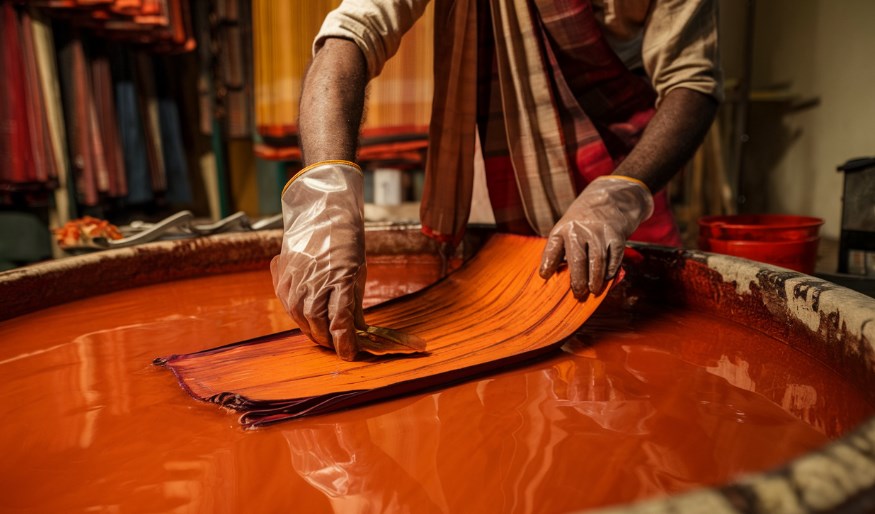A Traditional Tapestry
Indian textiles have a rich mosaic, and the Kotpad saree stands out as a testament to the rich heritage and artistry of natural (organic) dyeing. Hailing from the picturesque village of Kotpad in Odisha, this exquisite saree is a piece of clothing but a story woven with tradition, skill, and the love of nature. Join us on a journey through the fascinating world of natural dyeing, revealing the secrets that breathe life into each Kotpad saree.
The Organic Hues of Saree
At the core of the Kotpad saree lies a unique dyeing process that employs plant-based materials to create stunning colors. Natural dyes are gentle and eco-friendly, unlike synthetic dyes, which can be harsh and harmful to the environment and the skin. The process begins with carefully selecting natural materials like – plants, roots, and even insects that yield a kaleidoscope of colors.
Colors from Nature
The palette of natural dyes is as varied as the landscape itself. Indigo, derived from the indigo plant, offers a rich, deep blue reminiscent of twilight skies. Turmeric lends a warm, sunny yellow, brightening any fabric, while madder root produces vibrant reds and oranges. For earthy browns and blacks, artisans turn to haritaki and pomegranate peels. Every color tells a story deeply rooted in the local ecosystem and the wisdom of generations.
A Labor of Love the Dyeing Process
Once the ingredients are gathered, the dyeing process can commence. The first step involves extracting the dye from the plant materials, typically boiling or soaking. The artisans meticulously monitor the temperature and duration, greatly influencing the final hue.
Preparing the Fabric
Before dyeing, the saree fabric, usually handwoven cotton, is prepared through mordanting. This includes treating the fabric with a mordant, often alum or myrobalan, to enhance color retention and vibrancy. The fabric is then put to soak in a dye bath, absorbing the natural pigments. This phase requires patience as the colors deepen over time. The artisans often use a technique called “tie-dye,” which involves tying sections of the fabric to create intricate patterns, adding a layer of artistry to the final product.
The Art of Weaving
Once the dyeing process is complete, the dyed fabric is dried in the sun, allowing the colors to set naturally. The final step in the journey is weaving, where skilled weavers transform the dyed fabric into a beautiful saree. Traditional motifs and patterns are intricately woven into the fabric, often depicting elements of nature, folklore, and local culture.
A Sustainable Choice
The revival of natural dyeing practices in recent years has also highlighted the importance of sustainability. As consumers become more conscious of their choices, the demand for eco-friendly products like Kotpad sarees has surged. By choosing natural dyes, we support local artisans and promote environmental stewardship.
The Richness of Kotpad Sarees
Owning a Kotpad saree is like holding a piece of history. The artisans’ commitment and passion reflect the colors, patterns, and craftsmanship. Wearing a Kotpad saree is not just about fashion; it’s a way to connect with a rich cultural heritage and support sustainable practices.
Woven with Love!
The art of natural dyeing is a beautiful blend of tradition, skill, and sustainability. Behind every Kotpad saree lies a story of nature’s bounty and the artisans’ relentless pursuit of perfection. As we embrace the beauty of these handwoven treasures, we also celebrate the stories, the colors, and the enduring legacy of the people who create them. So next time you drape a Kotpad saree, remember the journey to reach you, an intricate dance between nature, artistry, and heritage woven with love.


